What is Subsurface Utility Engineering?
SUE for short.
Posted 23:48 August 14, 2023
Last Updated 23:48 August 14, 2023

Subsurface Utility Engineering (SUE) is a systematic and comprehensive process that involves managing the risks associated with underground utilities during construction, design, and other engineering activities. It aims to accurately locate, map, and assess the condition of underground utilities to prevent damage, reduce project delays, and enhance overall safety.
The SUE process typically involves several levels of investigation, categorizing the accuracy of utility information:
1. Quality Level D (QLD): This is the basic level of utility information gathering, often involving existing records and plans. It provides a general idea of the utilities' location but may not be entirely accurate or up-to-date.
2. Quality Level C (QLC): This level involves a more detailed investigation using non-intrusive methods such as geophysical surveys and remote sensing technologies. It improves the accuracy of utility location data.
3. Quality Level B (QLB): At this level, the SUE process includes exposing utilities through methods like vacuum excavation (hydrovac) to visually verify their location and attributes. This provides more precise information.
4. Quality Level A (QLA): The highest level of accuracy involves precise measurement and surveying of the exposed utilities. This could include techniques like ground-penetrating radar, electromagnetic locators, and other advanced technologies.
The benefits of SUE include:
• Risk Mitigation: Accurate utility information reduces the likelihood of accidental utility strikes during construction, minimizing associated risks and costs.
• Project Cost Savings: By identifying utilities early and accurately, project delays and redesigns can be avoided, leading to cost savings.
• Efficient Planning: With accurate utility data, engineers and designers can better plan their projects to work around existing utilities.
• Regulatory Compliance: Many projects are subject to regulations that require accurate utility location and protection. SUE helps ensure compliance.
• Enhanced Safety: Preventing utility strikes enhances job site safety for workers and the surrounding community.
SUE is particularly important in urban environments where underground utilities are densely packed and construction activities can disrupt essential services. It's widely adopted in engineering and construction projects to ensure that utilities are properly managed and protected. The American Society of Civil Engineers (ASCE) has established guidelines for SUE to standardize the process and improve the reliability of utility information.
Hole Hogz specializes in hydro excavation throughout southern Nevada. Our hydrovac fleet is new and top of the line. Contact us today for a consultation on any upcoming excavation project. We service municipal, commercial, and residential customers.
